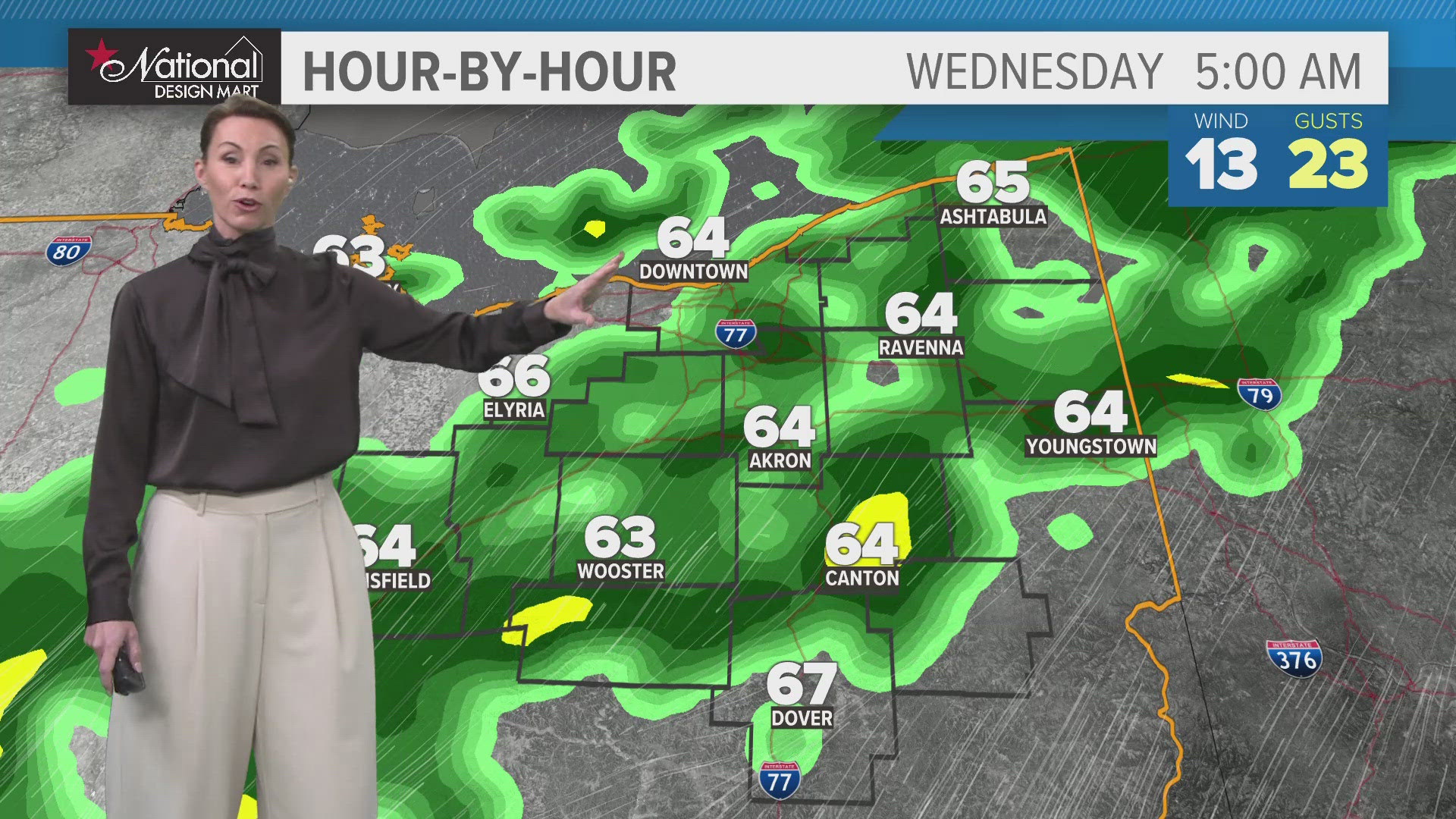![111116081112_3465159df71e41ea8a6534ab10e79b5d_t3[ID=3501789] ID=3501789](http://www.gannett-cdn.com/-mm-/33d97f8a03d5ea06baca0f7a30eca34c8bd87643/r=500x281/local/-/media/WKYC/WKYC/2013/11/11/1384220068000-111116081112-3465159df71e41ea8a6534ab10e79b5d-t3.png) Each day this week, we'll bring you a different topic about winter weather during Winter Weather Awareness week.
Each day this week, we'll bring you a different topic about winter weather during Winter Weather Awareness week.
Today's Topic: Winter Climate and Sources of Weather Information
Snow across Ohio and northwest Pennsylvania generally occurs in two ways:
- Organized Systems: During a typical winter, these weather systems bring a number of small snowfalls of 2 inches or less. Several times a year the region may be threatened by a well developed storm system that has the potential to produce heavier snow of 6 inches or more. Storm systems can be difficult to predict at times. A small shift in the storm track can mean the difference between shoveling and partly cloudy skies.
- Lake Effect: This type of snow occurs when very cold air flows across the Great Lakes during the winter months and absorbs moisture. The moisture is then condensed out east and south of the Great Lakes. The result is cloudiness and snow showers. This "lake effect" snow adds substantially to the winter snowfall across portions of northeast Ohio and northwest Pennsylvania.
Over portions of our region, heavy amounts of lake effect snow can occur. The close proximity to Lake Erie and the higher terrain of northeast Ohio and northwest Pennslyvania causes substantial lake effect snow during cold outbreaks.
Much of this region receives over 40 inches of snow during a typical winter. Parts of the "snowbelt" of extreme northeast Ohio and northwest Pennsylvania receive over 100 inches of snow each season.
Ohio & Northwest Pennsylvania average snowfall (inches):
Akron-canton ....................... 47.9
Cincinnati ............................. 22.9
Cleveland ............................. 63.3
Columbus ............................ 29.2
Dayton ................................ 29.3
Mansfield ............................. 45.4
Toledo ................................ 37.6
Youngstown ........................ 55.0
Note: Records are taken at local airports and the normal is based on 30 year averages from the most recent statistics available.
Daily weather information is available 24 hours a day from the National Weather Service. Forecasts for Ohio and northwest Pennsylvania are regularly issued 4 times a day and updated as often as necessary.
NOAA weather radio is produced and generated at weather offices across Ohio, Pennslyvania and around the nation. Weather information is distributed on special FM frequencies (162.400, 162.425, 162.450, 162.475, 162.500 162.525, 162.550 MHZ) from several transmitter sites in and around Ohio and Pennsylvania.
Specially designed weather radios are automatically alarmed and activated by the local National Weather Service office when a severe weather warning is issued. In this way, you can be alerted to severe weather warnings almost immediately! These weather radios are available at local electronics retailers or as a special frequency on certain AM/FM radios.
National weather Service forecasts are also available on cable television on the Weather Channel and various other stations. Forecasts are usually available through other local media outlets. Some cities have National Weather Service forecasts available by phone.
NWS forecasts can also be found on the internet. Forecasts for northern Ohio and Northwest Pennsylvania can be found on the NWS Cleveland website at http://www.erh.noaa.gov/cle
And of course, Channel 3 is always "Weather Ready" on-air and on-line at http://wkyc.com/weather
---
Information courtesy of the National Weather Service office in Cleveland
---
WKYC WEB EXTRA: Download and print a copy of Channel 3 Weather's Winter Weather Safety Guide. Please click on the "download" link after the the guide.


